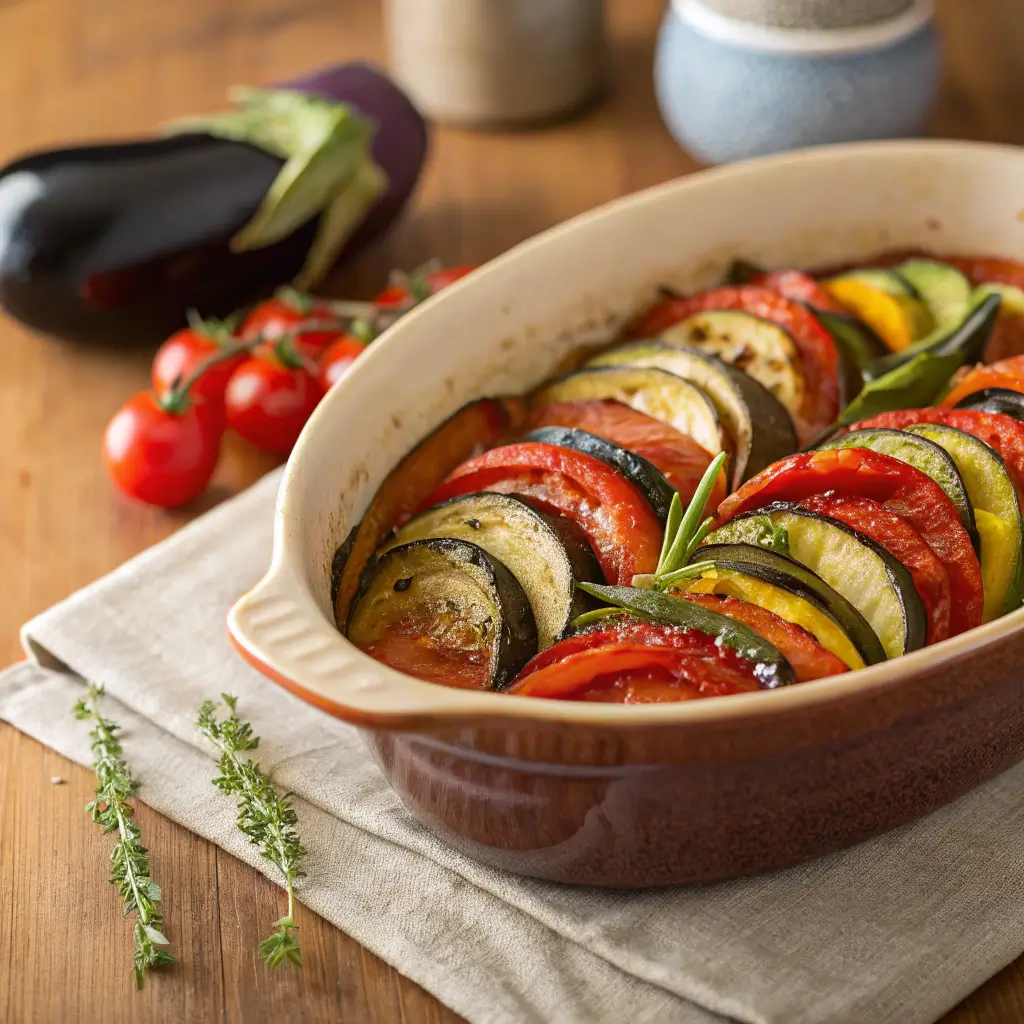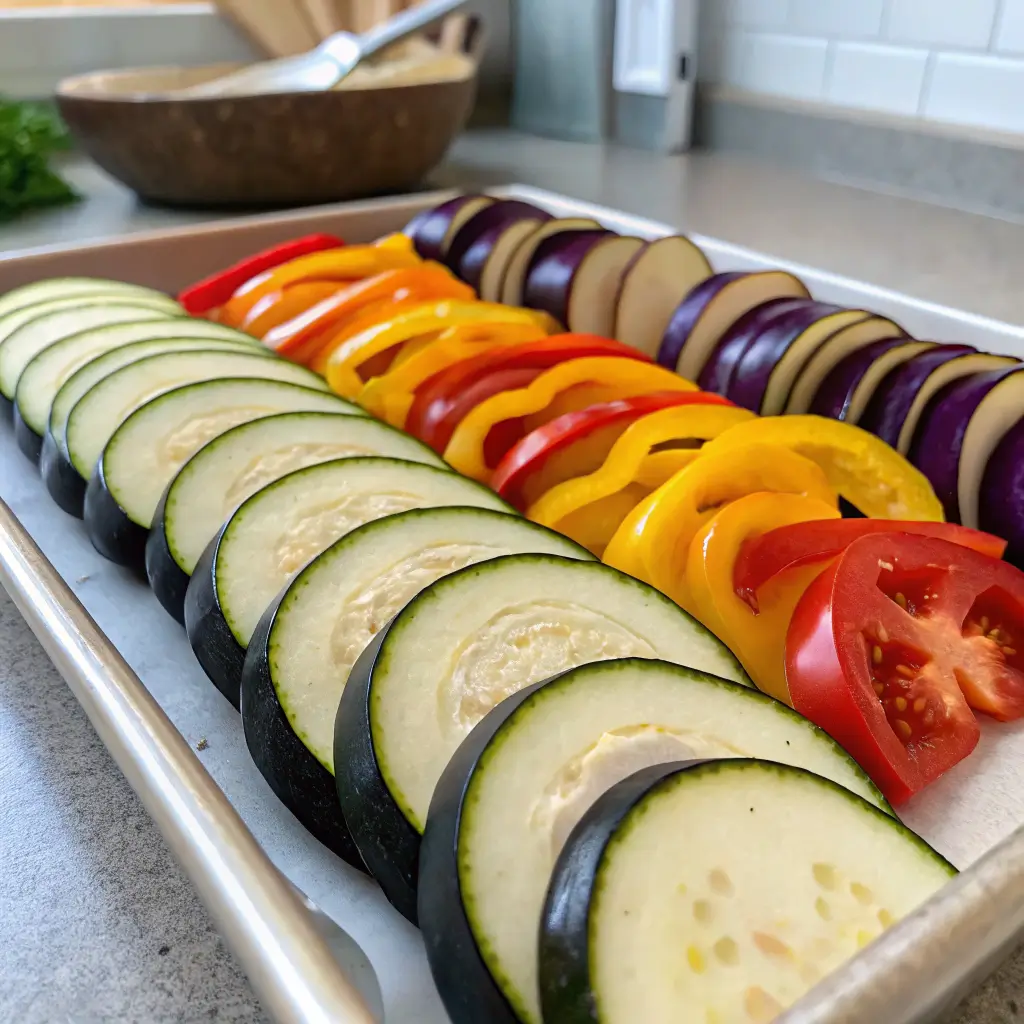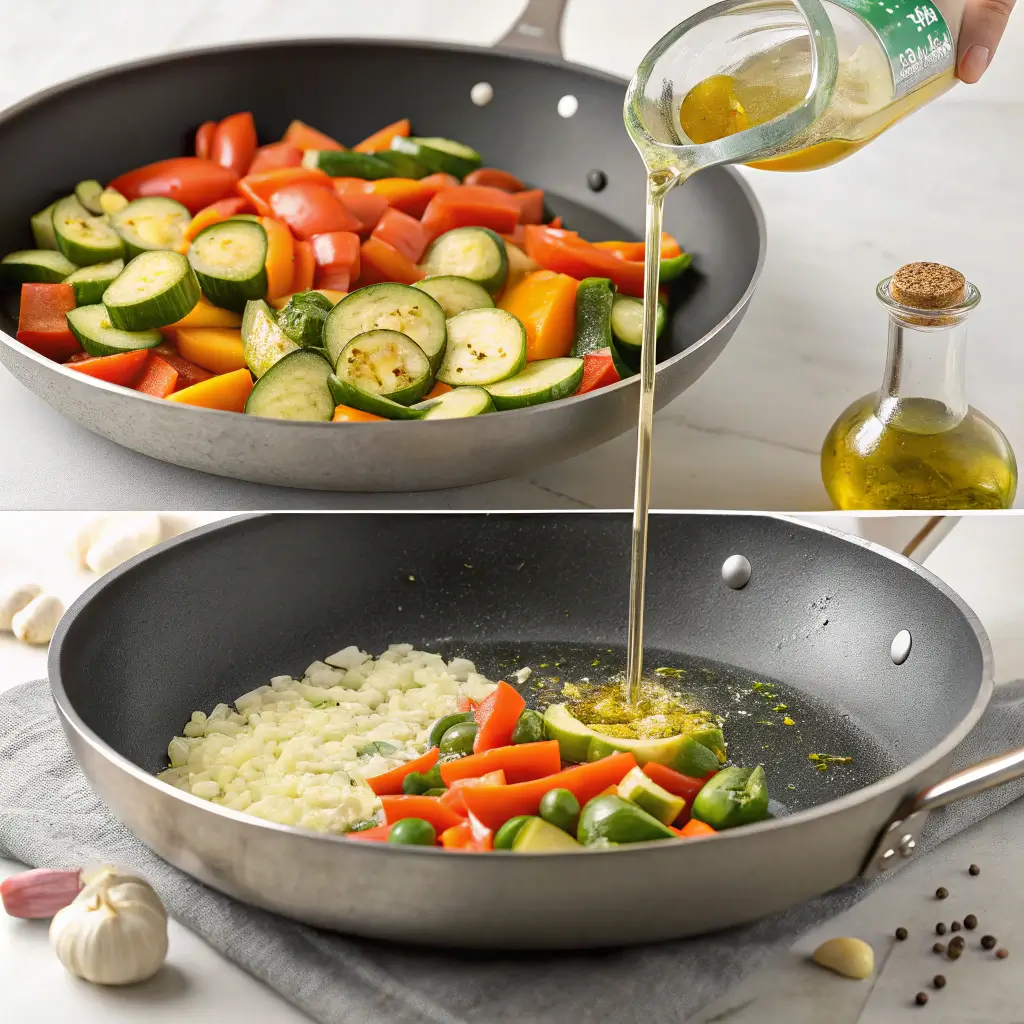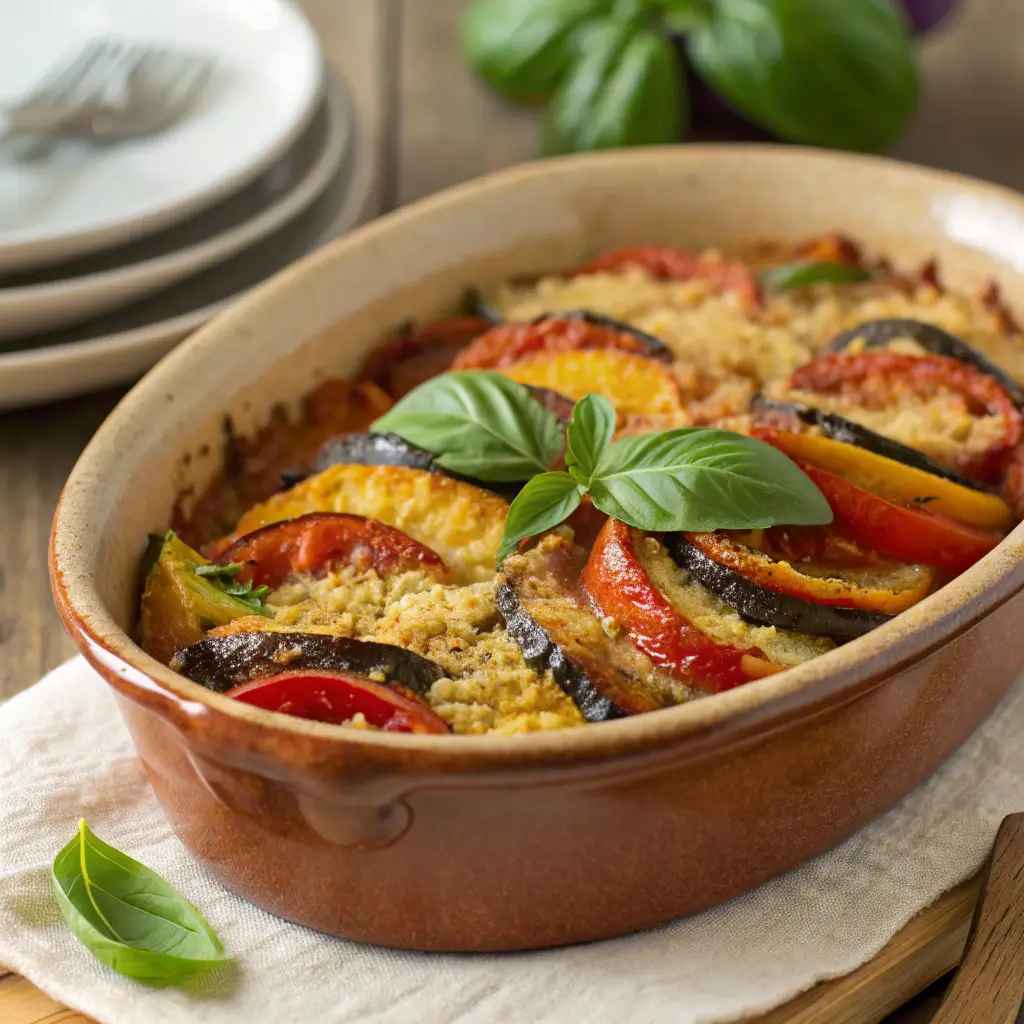Introduction
Classic ratatouille is a rustic and flavorful vegetable stew that originated in the Provence region of France. Known for its medley of slow-cooked vegetables, including eggplant, zucchini, and tomatoes, this dish is the embodiment of Mediterranean cuisine—simple yet bursting with flavor. The dish has been celebrated for generations, finding its way into global kitchens thanks to its versatility, health benefits, and rich taste. Whether served as a main course, a side dish, or even cold as a salad, ratatouille’s comforting warmth never fails to impress.
In this article, you’ll learn about the origins of this iconic dish, the essential ingredients, step-by-step preparation, famous variations, and tips to help you create the perfect ratatouille every time.

Table of Contents
What Is Classic Ratatouille?
The Origins of Ratatouille
Ratatouille is a traditional Provençal dish that dates back to the 18th century. The name “ratatouille” comes from the French word “touiller,” which means “to stir” or “toss.” Originally considered a humble peasant dish, it was created to make use of abundant summer vegetables in the region. Farmers would gather seasonal produce, cook them together, and create a hearty meal that could feed a family.
Over time, ratatouille became more than just peasant food. French chefs refined the dish, adding aromatic herbs, experimenting with cooking techniques, and turning it into a sophisticated culinary delight. Today, it is a symbol of French home cooking and a must-try dish for anyone who appreciates Mediterranean flavors.
What Makes It “Classic”?
The classic version of ratatouille sticks to its Provençal roots by using the freshest seasonal vegetables available, particularly eggplant, zucchini, bell peppers, onions, garlic, and tomatoes. What sets it apart from modern variations is its simple preparation and reliance on traditional herbs like thyme and rosemary. Unlike some contemporary twists, classic ratatouille doesn’t rely on heavy sauces or complex presentations—its charm lies in the harmony of its natural flavors.
Essential Ingredients for Classic Ratatouille
Creating the perfect ratatouille starts with selecting high-quality, fresh ingredients. Each vegetable plays a crucial role in developing the flavor and texture of the dish, so choosing ripe, in-season produce is key.
Core Vegetables

- Eggplant
- Adds a creamy texture and absorbs flavors beautifully.
- Opt for smaller, firm eggplants to avoid bitterness.
- Zucchini
- Brings a tender, slightly sweet flavor.
- Make sure to use medium-sized zucchinis to maintain structure during cooking.
- Bell Peppers
- Both red and yellow peppers are used to add color and a sweet, slightly smoky taste.
- Tomatoes
- The heart of the dish, providing acidity and richness.
- Ripe, juicy tomatoes are essential for a flavorful sauce.
Aromatic Additions
- Onion and Garlic
- Onion adds a mellow sweetness, while garlic enhances the savory depth of the dish.
- Herbs de Provence
- This blend typically includes thyme, rosemary, marjoram, oregano, and lavender.
- Essential for achieving authentic Mediterranean flavors.
- Olive Oil
- Use high-quality extra virgin olive oil to elevate the dish. It imparts a fruity, rich flavor and helps soften the vegetables.
Optional Additions
- Bay leaves for an herbal undertone
- Balsamic vinegar (if you prefer a tangy twist)
- Capers or olives for added brininess
Classic Ratatouille Preparation Methods
Ratatouille can be prepared using different techniques, each with its unique outcome. Here’s an overview of the most popular methods.
The Traditional Stove-Top Method
- In this method, each vegetable is sautéed separately to maintain its texture and flavor.
- Once all the vegetables are cooked, they are combined and simmered together, allowing the flavors to meld without turning into a mushy consistency.
- This method is ideal for those seeking the classic, layered flavor profile.

The Oven-Baked Ratatouille (Tian Style)
- Vegetables are sliced and arranged in a circular pattern in a baking dish, drizzled with olive oil, and seasoned with herbs.
- Baking allows the vegetables to caramelize, creating a rich, slightly smoky flavor.
- This version is visually stunning and perfect for dinner parties.
One-Pot Slow Cooker Method
- All ingredients are placed in a slow cooker and cooked for 4-6 hours on low heat.
- This hands-off method is convenient and results in a deeply flavorful stew.
Step-by-Step Classic Ratatouille Recipe
Ingredients List
| Ingredient | Quantity |
|---|---|
| Eggplant | 2 medium |
| Zucchini | 2 medium |
| Bell peppers | 2 (1 red, 1 yellow) |
| Tomatoes | 4 large |
| Onion | 1 large |
| Garlic cloves | 3 minced |
| Olive oil | 4 tbsp |
| Herbs de Provence | 2 tsp |
| Bay leaf | 1 large |
| Salt and pepper | To taste |
Instructions
- Prepare the Vegetables
- Dice the eggplant, zucchini, bell peppers, and tomatoes into uniform pieces.
- Sprinkle salt over the eggplant and let it sit for 20 minutes to draw out excess moisture. Pat dry with a paper towel.
- Sauté the Aromatics
- Heat 2 tbsp of olive oil in a large pan over medium heat. Sauté the onions until translucent, then add garlic and cook for an additional 1-2 minutes.
- Cook the Vegetables Separately
- In the same pan, add more olive oil and cook the eggplant until golden brown. Remove and set aside.
- Repeat with the zucchini and bell peppers, cooking each vegetable until slightly softened but not fully cooked.
- Combine and Simmer
- Return all the vegetables to the pan. Add tomatoes, herbs de Provence, a bay leaf, and salt and pepper.
- Cover and let the mixture simmer on low heat for 30-40 minutes, stirring occasionally.
- Taste and Adjust
- Remove the bay leaf, taste the stew, and adjust seasoning as needed.
- If the mixture is too acidic, add a pinch of sugar.
Variations Inspired by Famous Chefs
Julia Child’s Ratatouille
- Julia Child’s method involves cooking each vegetable separately to preserve texture.
- She finishes the dish by layering the vegetables and baking them briefly to meld the flavors.
Jamie Oliver’s Rustic Ratatouille
- Jamie Oliver’s version leans toward a rustic, chunky presentation.
- He often includes balsamic vinegar to enhance the dish’s natural sweetness.

Tips for Cooking the Perfect Ratatouille
- Use Fresh, Seasonal Vegetables
- The quality of the ingredients determines the overall taste.
- Don’t Rush the Cooking Process
- Allow enough time for the vegetables to release and absorb flavors.
- Sauté Separately for Texture
- Cooking each vegetable on its own prevents them from becoming mushy.
- Let It Rest
- Ratatouille tastes even better after resting for a few hours or overnight.
Serving Suggestions
- As a Main Course: Serve with crusty French bread or rice.
- As a Side Dish: Pair with roasted chicken, grilled fish, or lamb chops.
- Cold Ratatouille: Serve as an appetizer or salad with a drizzle of olive oil.
Storing and Reheating Ratatouille
- Refrigeration: Store in an airtight container for up to 5 days.
- Freezing: Portion into freezer-friendly containers and freeze for up to 3 months.
- Reheating: Gently reheat on the stovetop or in the microwave.
Nutritional Benefits of Ratatouille
This vegetable-based dish is both nutritious and low in calories. It offers a generous supply of vitamins A and C, potassium, and fiber, which are essential for maintaining good health. The inclusion of olive oil adds healthy fats, contributing to heart health. Its plant-based composition makes it a fantastic choice for those following vegetarian or vegan diets, providing a balance of nutrients without compromising on flavor.
Explore More Delicious Recipes
For more delicious Mediterranean recipes, check out our article on Easy Salmon Recipe Bites. This dish pairs perfectly with ratatouille for a light, flavorful meal.
FAQs
1. What is the easiest way to prepare this vegetable stew without sacrificing flavor?
The simplest approach is to bake the vegetables in a casserole dish. Slice the eggplant, zucchini, tomatoes, and bell peppers into rounds and layer them in the dish. Drizzle with olive oil, then season with salt, pepper, and herbs. Bake at 375°F (190°C) for 45-50 minutes. This method minimizes active cooking time and allows the vegetables to caramelize, creating a rich, flavorful result with minimal effort.
2. How does Julia Child’s version differ from the traditional recipe?
Julia Child’s approach involves cooking each vegetable individually before combining them, ensuring they maintain their distinct textures and flavors. She recommends sautéing the vegetables in olive oil until lightly browned, then layering them in a pot to finish cooking. This technique produces a more refined dish, as opposed to the rustic, one-pot preparation often seen in traditional recipes.
3. Can this dish be made ahead of time, and how should it be stored?
Yes, preparing it ahead often improves its taste, as the flavors develop overnight. Once cooked, allow it to cool before storing it in an airtight container in the refrigerator for up to 5 days. For longer storage, divide it into freezer-safe containers and freeze for up to 3 months. When reheating, use low heat on the stovetop to preserve the texture of the vegetables.
4. What are the essential ingredients for a classic ratatouille, and can I customize them?
The essential ingredients include eggplant, zucchini, bell peppers, tomatoes, onions, garlic, and olive oil. Herbs de Provence or a combination of thyme, rosemary, and bay leaves are typically used for seasoning. While these ingredients form the core of the dish, you can customize the recipe by adding mushrooms, squash, or even chickpeas to make it heartier. If you want to add a protein element, consider serving it with grilled chicken, poached eggs, or even a side of quinoa.
5. Is ratatouille served hot or cold, and which way is better?
Ratatouille can be served both hot and cold, depending on personal preference and the occasion. Hot ratatouille works well as a main course or side dish, especially during colder months when warm, hearty meals are preferred. Cold ratatouille, on the other hand, can be served as a refreshing salad or antipasto in the summer. To serve it cold, drizzle it with extra virgin olive oil and a splash of balsamic vinegar for added flavor.
6. How do I prevent my ratatouille from becoming watery or mushy?
To avoid watery or mushy ratatouille, follow these tips:
- Salt the eggplant: Before cooking, sprinkle the eggplant with salt and let it sit for 20-30 minutes. This draws out excess moisture and reduces bitterness.
- Cook the vegetables separately: Sauté each vegetable individually before combining them, which allows each to maintain its structure.
- Don’t overcrowd the pan: Overcrowding can lead to steaming instead of browning, which results in soggy vegetables.
- Simmer uncovered: Letting the ratatouille simmer uncovered allows excess liquid to evaporate, creating a thicker consistency.
7. Can I make ratatouille vegan or gluten-free?
Yes, classic ratatouille is naturally vegan and gluten-free as it primarily consists of vegetables, olive oil, and herbs. If you’re adding additional ingredients like bread or cheese, make sure they meet your dietary needs. To enhance the dish while keeping it vegan, consider topping it with plant-based cheese or serving it with gluten-free bread.
8. How can I enhance the flavor of my ratatouille?
Here are some tips to enhance the flavor:
Let the ratatouille rest for an hour or overnight—this allows the flavors to meld and intensify.
Use high-quality olive oil, as it significantly affects the overall taste.
Add a splash of balsamic vinegar or red wine during the last 10 minutes of cooking to deepen the flavors.
Garnish with fresh basil, parsley, or thyme before serving.
Conclusion
Classic ratatouille is a culinary gem that embodies the simplicity and beauty of French cuisine. Whether you prepare it the traditional way or explore variations by famous chefs, this dish is sure to become a staple in your kitchen.
